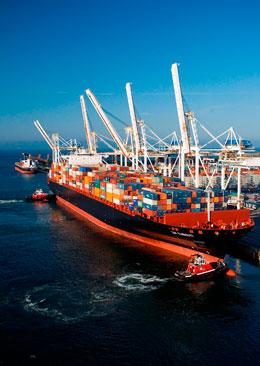Trans-Pacific Partnership is a landmark deal for Canada

Guest Commentary
By Stewart Beck
For a country that considers itself a nation of free traders, the Trans-Pacific Partnership (TPP) should be an easy sell. It is the largest, most ambitious trade deal in the world. It effectively lowers tariffs and sets common standards for 12 countries that represent a combined market of $28.5 trillion, or 40 per cent of the global economy.
But Canadians have been slow to embrace the TPP. Our latest Asia Pacific Foundation of Canada National Opinion Poll finds an even split, with 41 per cent expressing support for the TPP and 38 per cent opposed to this historic deal. The poll highlights a significant disconnect between positive attitudes toward free trade generally, and divided views on support for the TPP specifically.
The TPP has landed in the lap of Canada’s new government, which must now study the details of the agreement and potentially manage its ratification and implementation. This is a landmark deal for Canada, and the Liberal government could turn this into an early policy victory. But doing so requires bringing Canadian public opinion in line with the vision and opportunities embodied in the deal.
APF Canada polls have consistently found that two thirds of Canadians support free trade agreements in general, but this optimism about trade has yet to infuse the discourse around the new TPP. In our most recent poll Canadians express the usual concerns about the TPP, including 61 per cent that worries the agreement will lead to job losses in Canada. We also found a sizable wellspring of support for dairy and poultry farmers who are seen as being adversely affected by changes to supply management policies. The potential domestic “costs” of implementing the deal have crystallized in the minds of many Canadians.
Our poll suggests that TPP proponents need to position and promote the new deal in a way that appeals to Canadians’ overarching desire to participate in an open global marketplace. So, there are four core messages moving forward.
First, Canadians need reminding of the direct economic benefits of lowering barriers to international trade. By reducing tariffs and non-tariff barriers, Canadians will likely see lower prices on products they enjoy, including cars from Japanese automakers. Canadian industry will gain freer access to valuable new markets. The TPP will be particularly beneficial for the growing services sector and the ever-important agriculture and agri-foods industry. The deal has already been endorsed by a diverse coalition of industry groups, including the Canadian Life and Health Insurance Association, the Canadian Cattlemen’s Association, Canadian Manufacturers and Exporters, and other like-minded industry groups that envision Canadian companies playing a leading role in the economy of the Asia Pacific.
Second, proponents need to clarify just who is in the new club. Our polling found that there is low knowledge about who is in and who is out of the deal. Canadians ultimately want to know who their trading partners are. In the case of the TPP, it is some of Canada’s most trusted allies and longtime trading partners, including the U.S., Mexico, Australia, and Japan. Our polling finds support for free trade agreements with individual TPP member countries is very strong, but Canadians haven’t really connected the dots when it comes to the regional agreement.
Third, the TPP opens the door to major economic partners beyond the U.S., providing an opportunity for Canada to diversify its export markets. Canadians understand the importance of not placing all of their eggs in one basket. Our new government needs to ensure we have preferential access to a broad range of markets for those times when the U.S. economy hits a rough patch.
And finally, Canadians need to have an honest conversation about what staying out of this deal will mean for the country’s future prosperity. Providing the major partners ratify the deal, TPP countries will become increasingly integrated economically, politically and socially. Companies will want to locate their operations within the context of this trade bloc, and deal with preferred players on a level field. If Canada excludes itself from this new trade zone, it will not only lose preferential access to new markets, but also jeopardize its current trade relations with the U.S. and Mexico.
Canada is entering a period of discovery as Parliament scrutinizes the contents of the TPP and engages the public in a national debate about Canada’s economic future. If that future includes the Asia Pacific, a region that will represent two-thirds of the world’s middle class and over 45 per cent of global GDP by 2030, Canada must move forward as an active participant in multilateral economic forums. The TPP commits its signatories to building deeper trade relations in this pivotal region, where Canada can play a relevant and effective role.
Stewart Beck is the President and CEO of the Asia Pacific Foundation of Canada.









